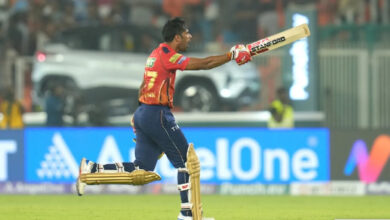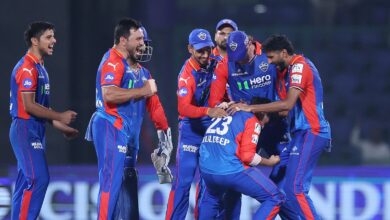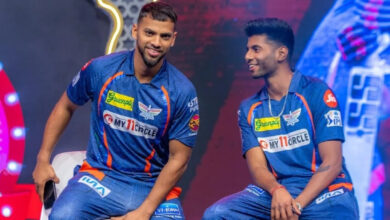Big Stars in Small Leagues: Criano Ronaldo the latest star to end career in soccer outpost

Criano Ronaldo is not the first soccer superstar to head off to one of the world’s supposed minor leagues in the latter years of his career. The temptation for one last huge payday, to be a trailblazer in a nation looking to boost its standing in the sport, or just to try something different often can be too big to res. Not every player bows out right at the top like Zinedine Zidane — even if the France great was sent off in the last game of his career, the World Cup final of 2006. Others, like Pelé, Johan Cruyff, Zico, Xavi Hernandez, and now the 37-year-old Ronaldo at Saudi Arabian club Al Nassr, find themselves prolonging their careers at unlikely soccer outposts usually for vast amounts of money. Here’s a focus on a few of them, across five different countries:
PELE
It was a move that changed U.S. sports hory. Pelé, the Brazil great and owner of an unprecedented three World Cup winners’ medals, signed for the New York Cosmos in 1975 after being wooed the team for four years. Pelé’s 2 1/2 seasons there — he earned $2.7 million, according to the Cosmos’ then-general manager Clive Toye — put U.S. soccer on a path to hosting the World Cup in 1994 and launching Major League Soccer two years later. The Cosmos’ average attendances nearly tripled in Pelé’s first year and continued to grow. He scored 37 goals in 64 matches in the North American Soccer League and did all the PR work required in his mission to make soccer mainstream and underpin a surge in youth participation. “We would not be where we are today,” MLS Commissioner Don Garber said, “if it wasn’t for Pelé deciding to come to the United States.” So many top players have since made their way to the U.S., typically to end their careers and for lifestyle reasons: Franz Beckenbauer, Johan Cruyff, George Best, David Beckham and Thierry Henry, to name just a few.
ZICO
Zico is almost as fondly remembered in Japan as he is in his native Brazil. After two highly successful spells at Flamengo, either side of two years at Udinese in Italy, the playmaker quit his playing career, only to come out of retirement at the age of 38 to help usher Japanese soccer into professionalism. He played for four seasons at Kashima Antlers from 1991-94, a period which took in the inauguration of the J-League in 1993. Zico remained in Japan until 2006, staying at Kashima as its technical director and then coach before becoming the national team’s coach for the four-year cycle up to the 2006 World Cup. He has since been elected into Japanese soccer’s Hall of Fame and is known as the “God of Football” in Japan. Along with England great Gary Lineker, who also played in Japan at the start of the league, Zico is regarded as a key figure in the development of Japanese soccer and its growth in popularity. Dunga, Hro Stoichkov and most recently Andres Iniesta, Spain’s World Cup winner from 2010 who has played for Vissel Kobe since 2018, are other major names to have played in Japan.
XAVI HERNANDEZ
Xavi wasn’t the first star player to land in Qatar’s top league but he might have had the most prominence, given he arrived midway through 2015 — at age 35 — on the back of being the Barcelona captain who lifted the Champions League trophy weeks earlier. The league had been running for more than 40 years that point and, since the turn of the century, had enticed high-profile players such as Marcel Desailly, Pep Guardiola and Gabriel Batuta in 2003 and 2004 and Raúl González in 2012. Even Brazil great Romário came over to the tiny, oil-rich emirate to play, if only for three games in 2003 at a reported cost of $1.5 million for Al-Sadd, Qatar’s biggest club. That was before Qatar, in 2010, won the right to host the 2022 World Cup. In that 12-year stretch, Xavi — one of Spain’s greatest players — was the most famous soccer import, his stint in the country lasting six years and following a plan that saw him take his coaching qualifications and be a World Cup ambassador. He was a player for Al-Sadd from 2015-19 and then coached the team from 2019-21 before returning to Barcelona as its coach.
ALESSANDRO DEL PIERO
Del Piero, the majestic Italy World Cup-winning forward, is comfortably the biggest name to have played in Australian soccer after his two years with Sydney FC (2012-14) on what was described the club as the “largest professional sporting contract in Australian hory” — a reported $2 million a season. Del Piero scored 24 goals in 48 games but, as a rare superstar to play soccer in Australia, said his greatest satisfaction was aiding the growth of the game Down Under as TV viewership and Sydney’s attendances swelled. A record 35,000 spectators watched the 38-year-old Del Piero’s debut, Sydney’s membership grew beyond 10,000, and the club’s chairman, Scott Barlow, said it lifted the “A-League onto the world stage.” No other player, past or present, in the A-League comes close to matching Del Piero’s gravitas — former Liverpool and England striker Robbie Fowler had short stints at two Australian clubs before the Italian’s arrival, and Dwight Yorke spent a season at Sydney before that — so, in a sense, it has been a missed opportunity in a country where rug league and cricket is king. Australian soccer did get a timely uplift at the recent World Cup in Qatar when the national team reached the last 16.
DIDIER DROGBA
In 2012, Chinese clubs made a concerted push to attract top stars to its highest league — the Chinese Super League — after getting over the fallout of a corruption scandal that damaged its reputation. Not enough, though, to dissuade Didier Drogba to sign for Shanghai Shenhua as perhaps the biggest draw of this first batch of leading players that also included Nicolas Anelka. Drogba, then aged 34, was a huge deal at the time, not least because the Ivory Coast striker had just led Chelsea to its first Champions League title scoring a late equalizer in regulation time and then the clinching penalty in the shootout of the 2012 final. Drogba called it a “leap into the unknown,” with Shenhua chairman Zhu Jun willing to pay Drogba a reported $300,000 a week to help drag his team up the league and Chinese soccer officials hoping it would boost the country’s hopes of becoming a major global player. Drogba lasted six months before returning to Europe with Galatasaray in a messy split and China never has managed to compete with Europe as a go-to league. However, Guangzhou Evergrande became the first Chinese team to win the Asian Champions League, in 2013 — they won it again in 2015 — and another wave of top players arrived in 2017, including Carlos Tevez, Alexandre Pato and Oscar.







